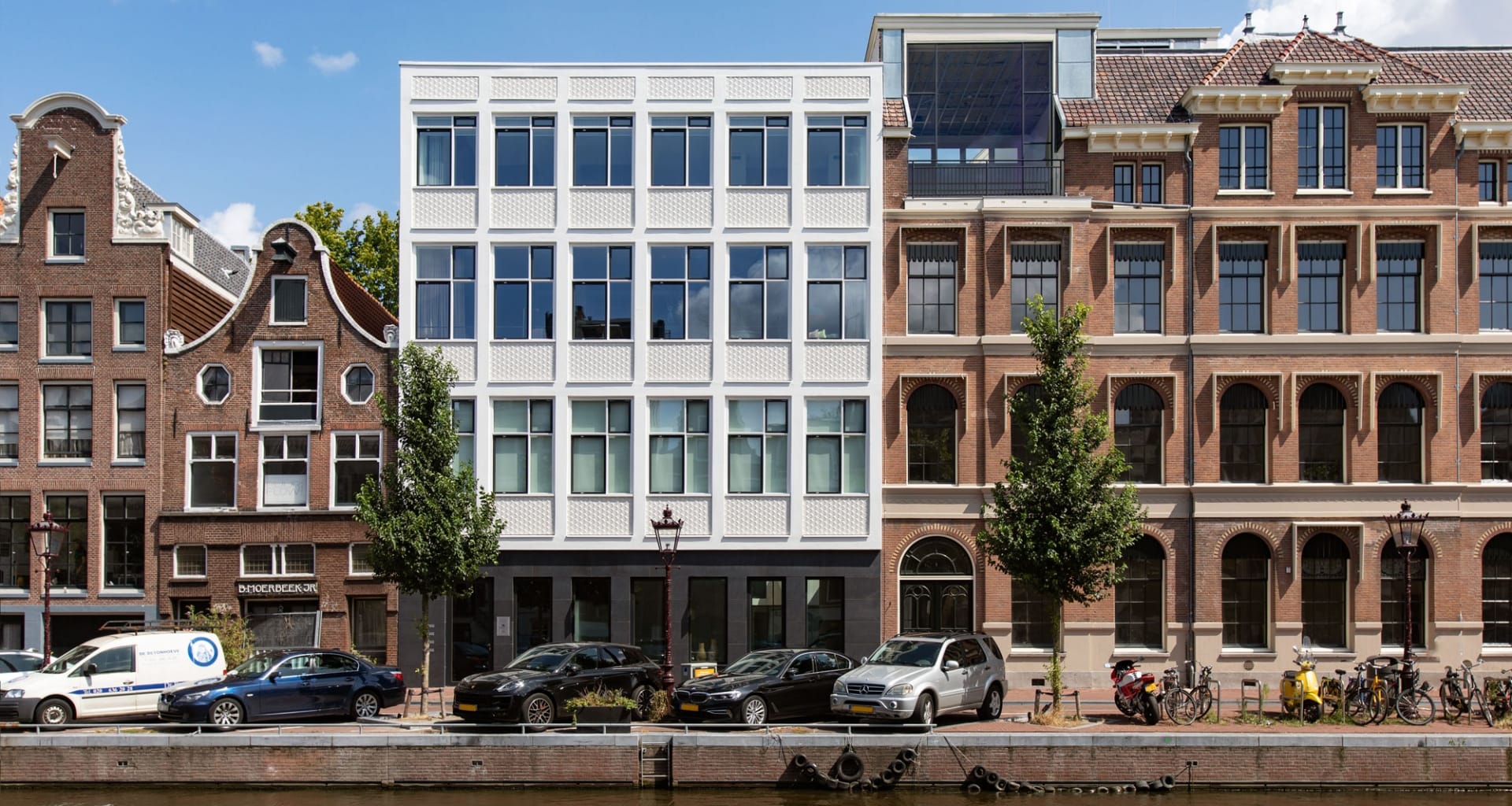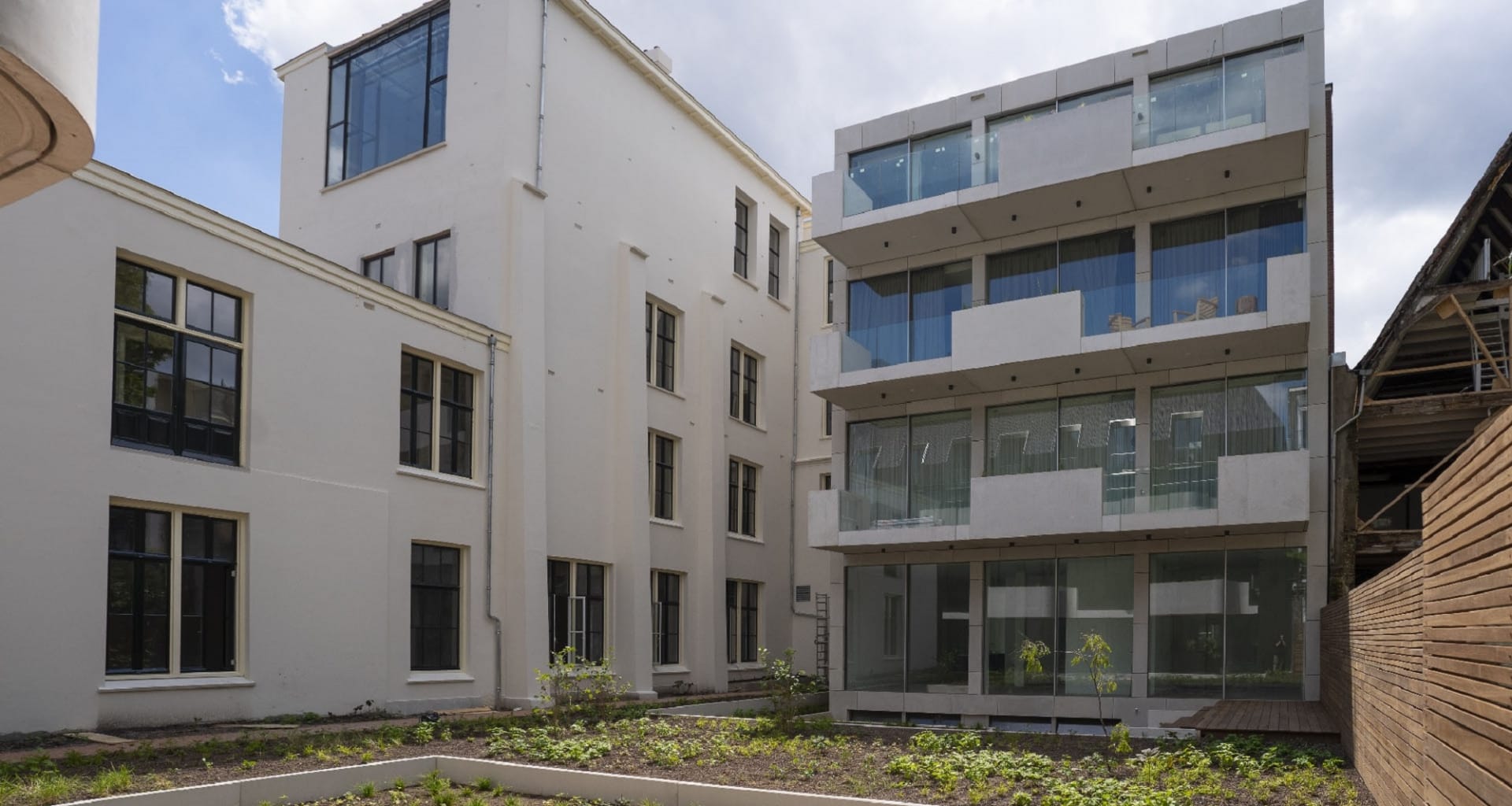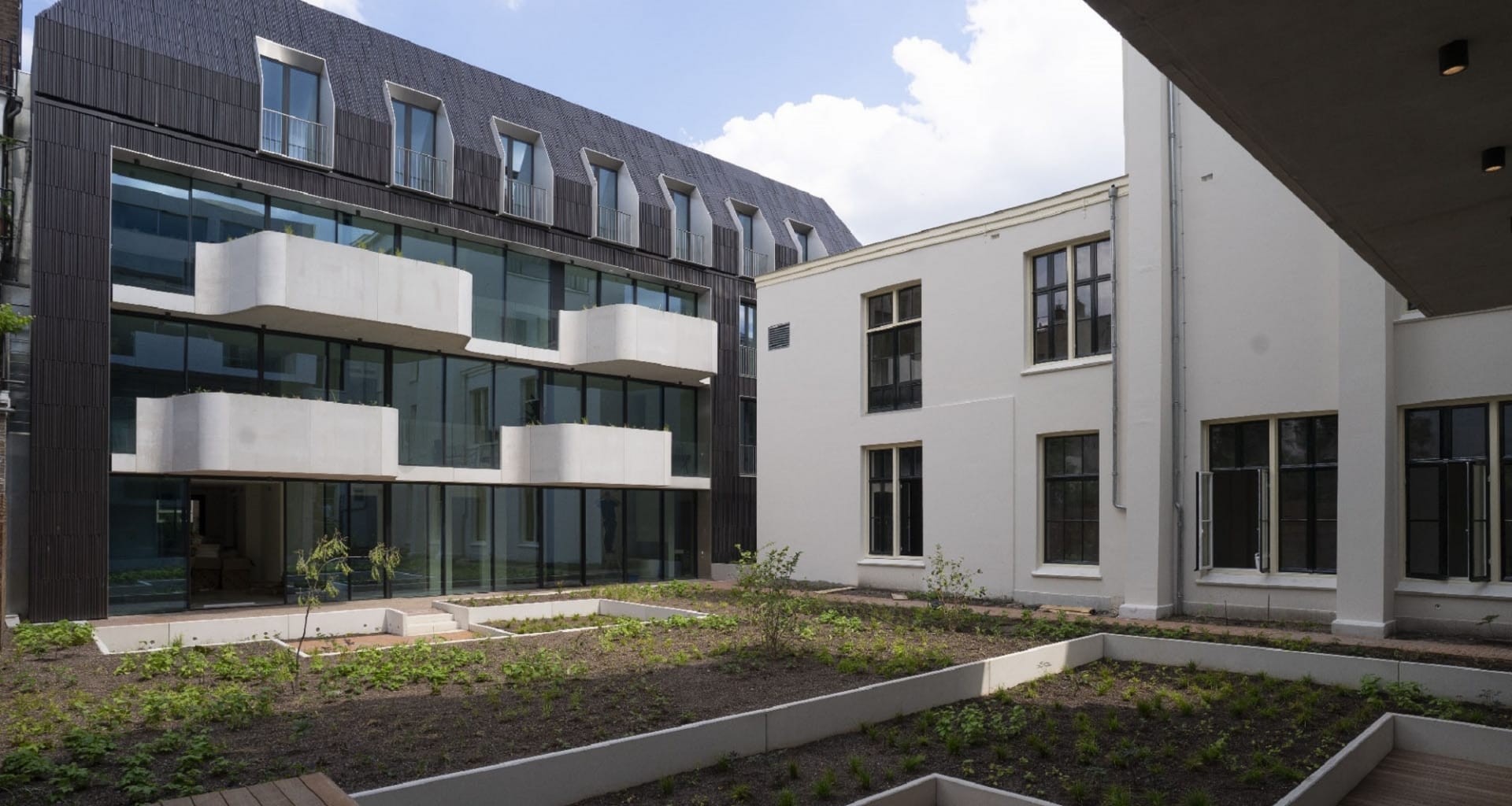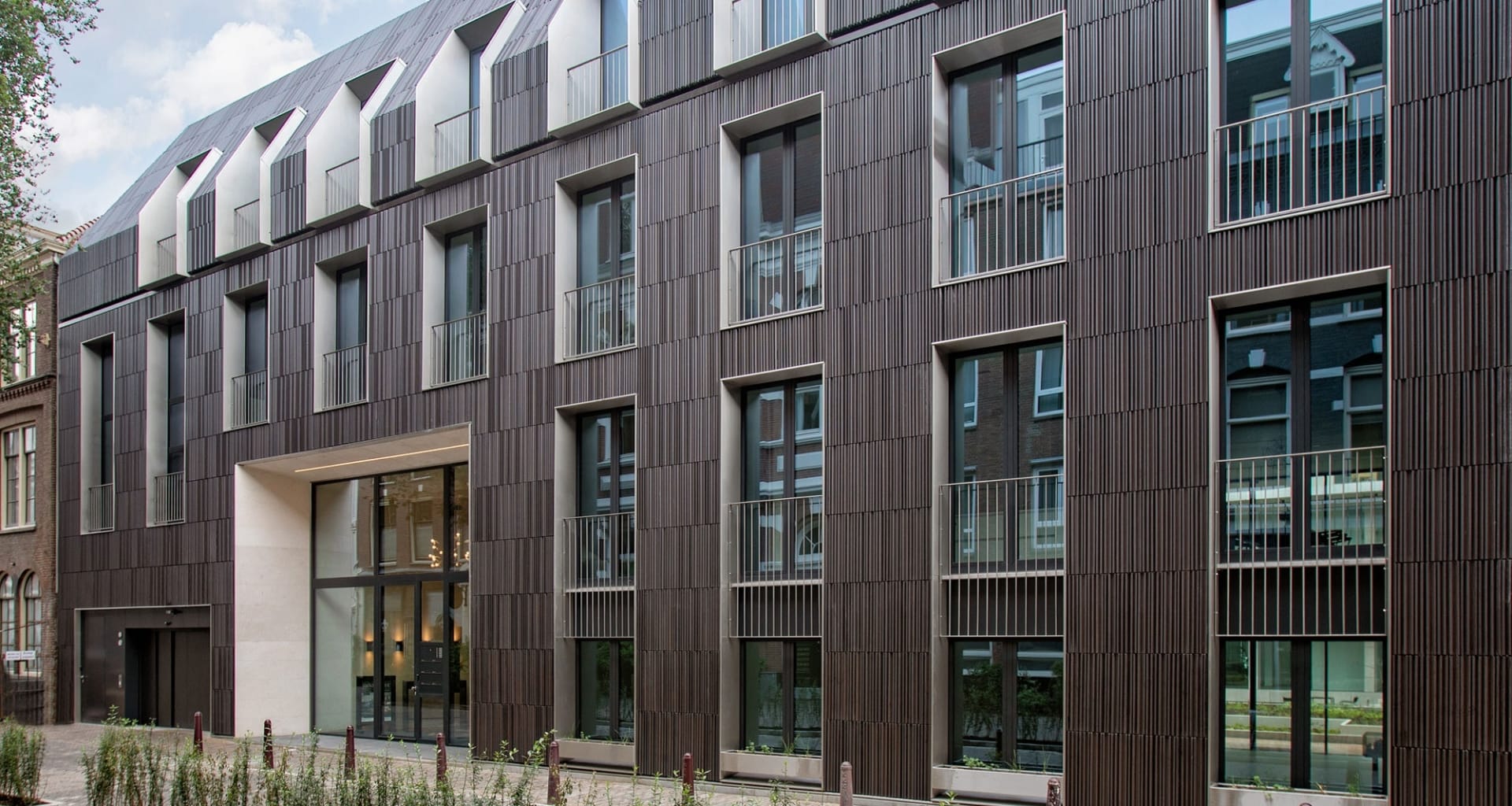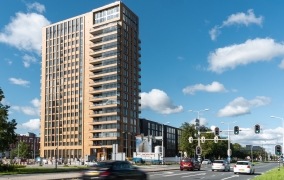Infinium Sliding Door, Meeting the Challenge for Renovation and Construction in Central Amsterdam.
The History
The Prinsengracht 769 hospital was built 1857, in response to a cholera epidemic in the heart of Amsterdam. The Prinsengracht canal is one of the four main canals in Amsterdam. This neighbourhood boasts numerous architectural gems, with the hospital’s original architecture contributing to the area’s superb architectural landscape.
The hospital complex experienced several additions over the years, in 1857, 1902, 1923 and 1957. The total area added is 9400 m2.
Fast-forward to 1996, when the last of the hospital beds were removed, so the complex could host a clinic, until 2015. Most recently, the building was sold to COD, a real-estate developer based in Amsterdam.
The Plan
The developer’s intention was to create a stylish mixed residential-and-commercial complex.
The main building, which dates back to 1923, was tagged to be transformed into an office space. It was restored, as closely as possible, to its original state. The building which was added in 1957 was developed into a high-end apartment complex with spacious rooms, immersed in natural light.
The facade and support structures were restored, and extended at the rear, to create room for balconies. State-of-the-art insulation and acoustic elements ensured that it lived up to contemporary soundproofing standards.
In 2014, the architectural firm, MVSA of Amsterdam, was contracted to restore and transform Prinsengracht 769. It was an especially exciting project for the firm. Architects rarely have the opportunity to design new builds in the city centre. The task of returning the building to its former glory, as precisely as possible, meant revealing the centuries-old detailing, decorations and panelling, some of which had been hidden behind false walls over the years. The client requested that the maximum amount of daylight was to flood the interiors. Historically important elements such as the operating room were to be transformed into large glass meeting rooms with huge windows.
However, the requirement for large windows created its own set of challenges.
The Challenge
From an architectural point of view, modern designs should be future-proof through the application of durable, sustainable materials. Aluminium fits the brief for all of the above requirements.
In order to ensure a good match with the adjacent building, a contemporary renovation with a concrete facade, the largest aluminium windows were selected for Prinsengracht 769. The challenge was to find a supplier that could deliver motorized aluminium sliding doors, with a height exceeding 3 metres.
AluK’s Infinium range was recommended. Infinium is a high-end aluminium sliding system that can be completely concealed in floors, walls and ceilings. Vast, transparent, light-permeable expanses, higher than 3.5 metres. The only visible element is a small, central interlocking system. Infinium contained the glass meeting rooms and replaced the massive windows in the old operating rooms.
To learn more about this project, watch our video.
